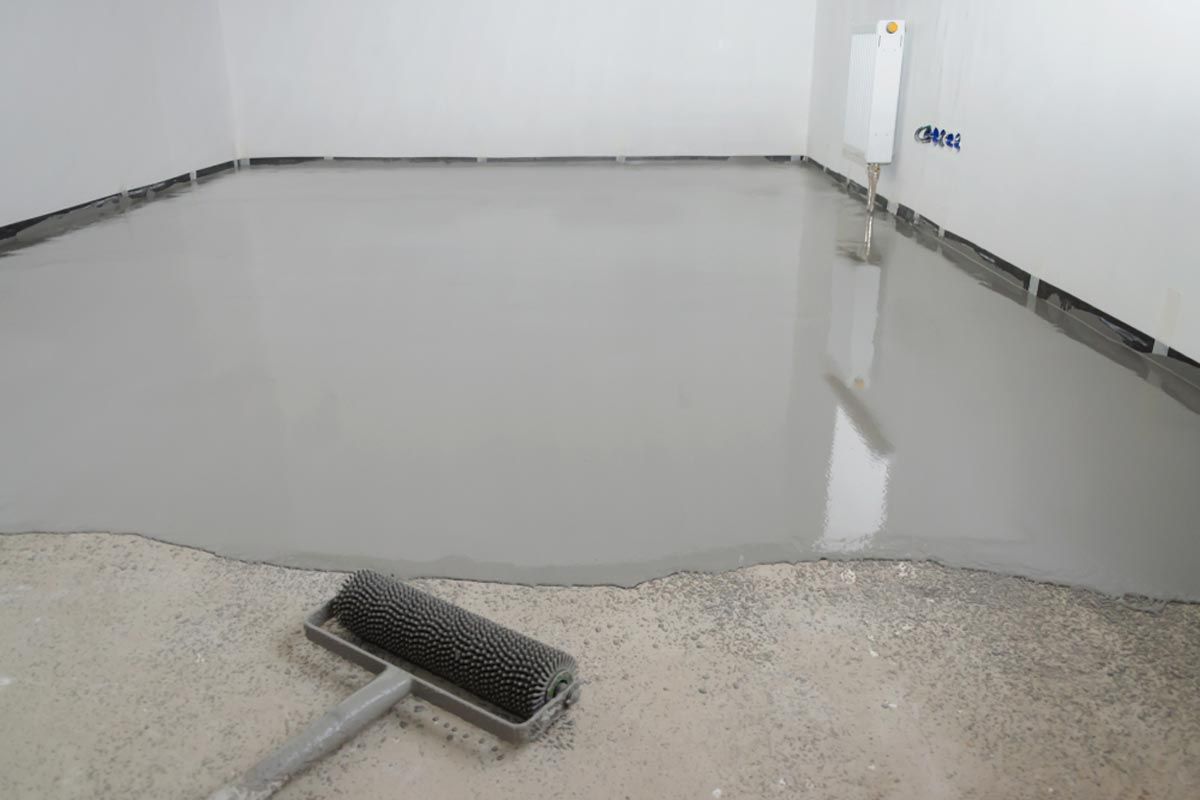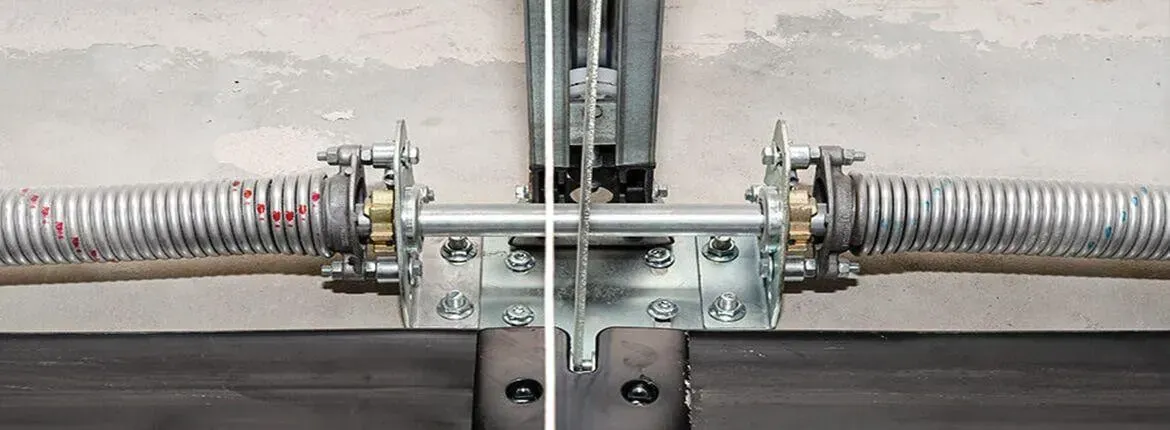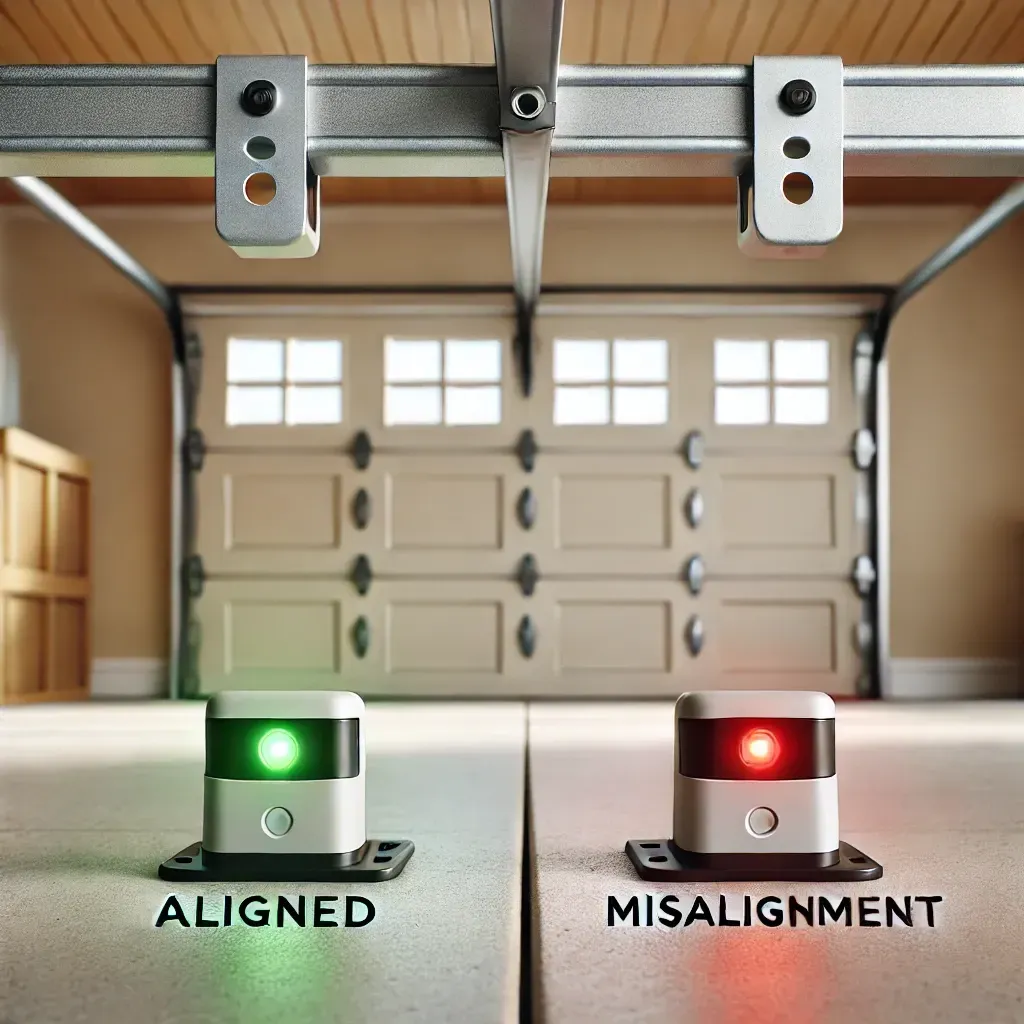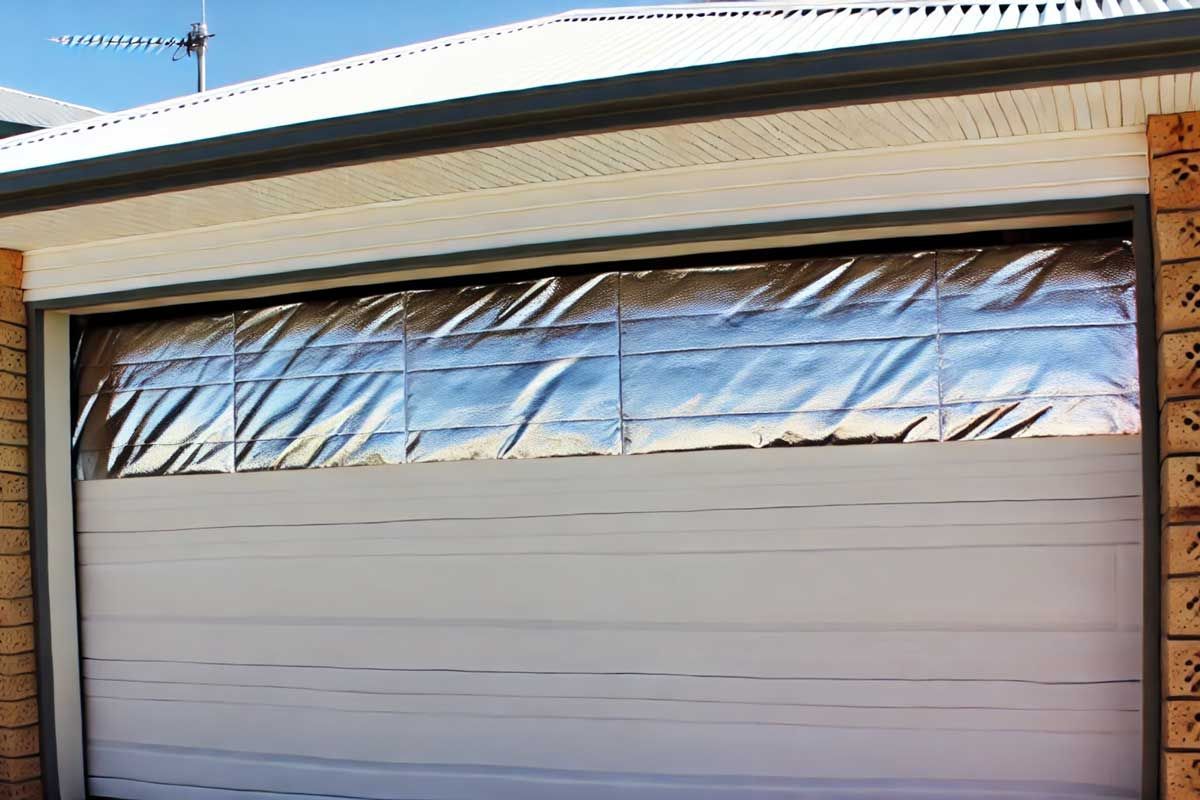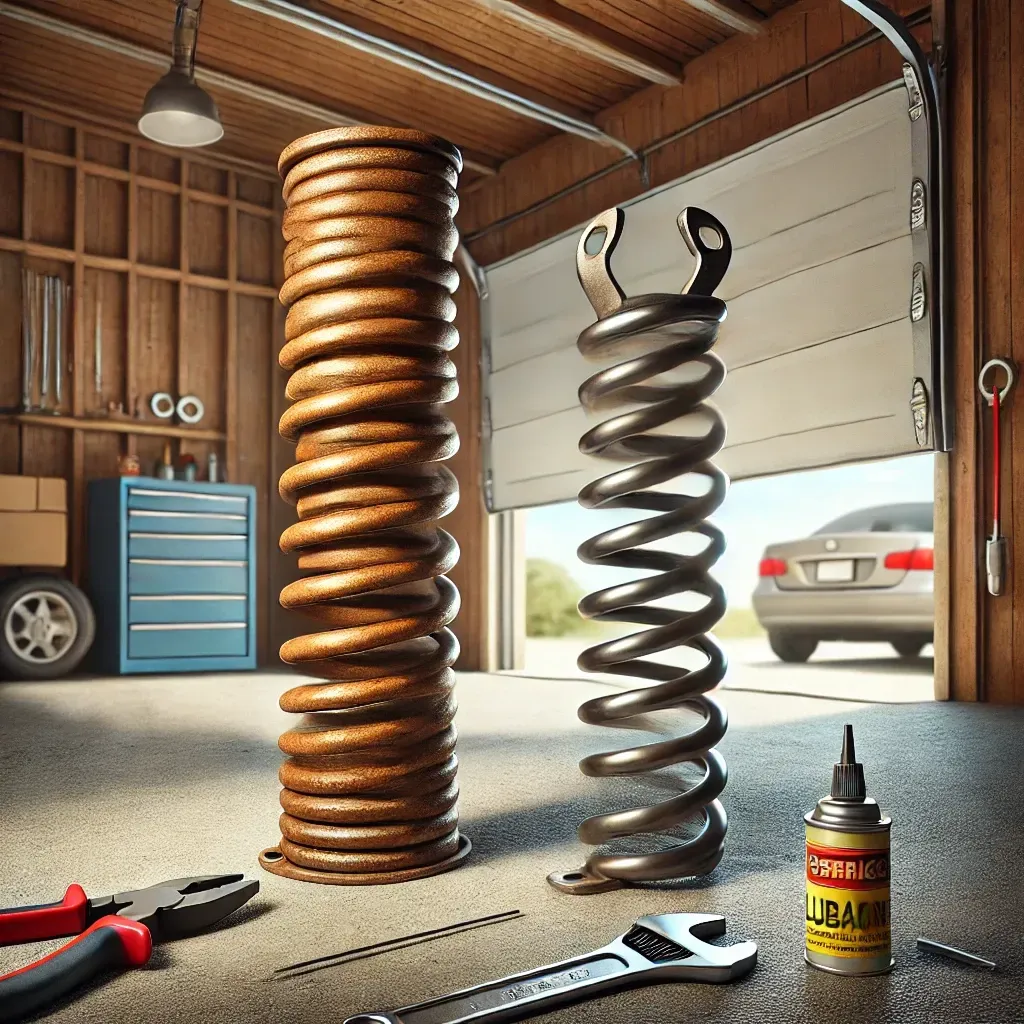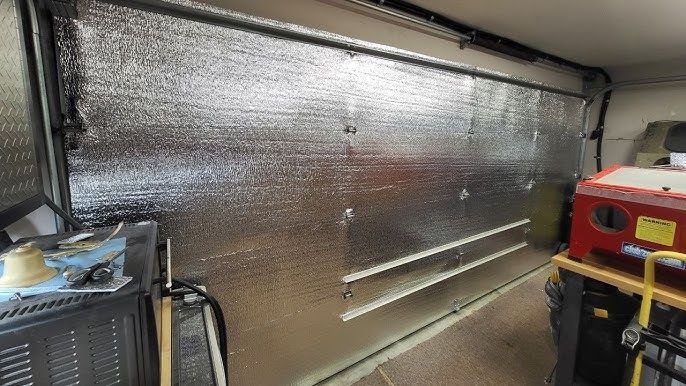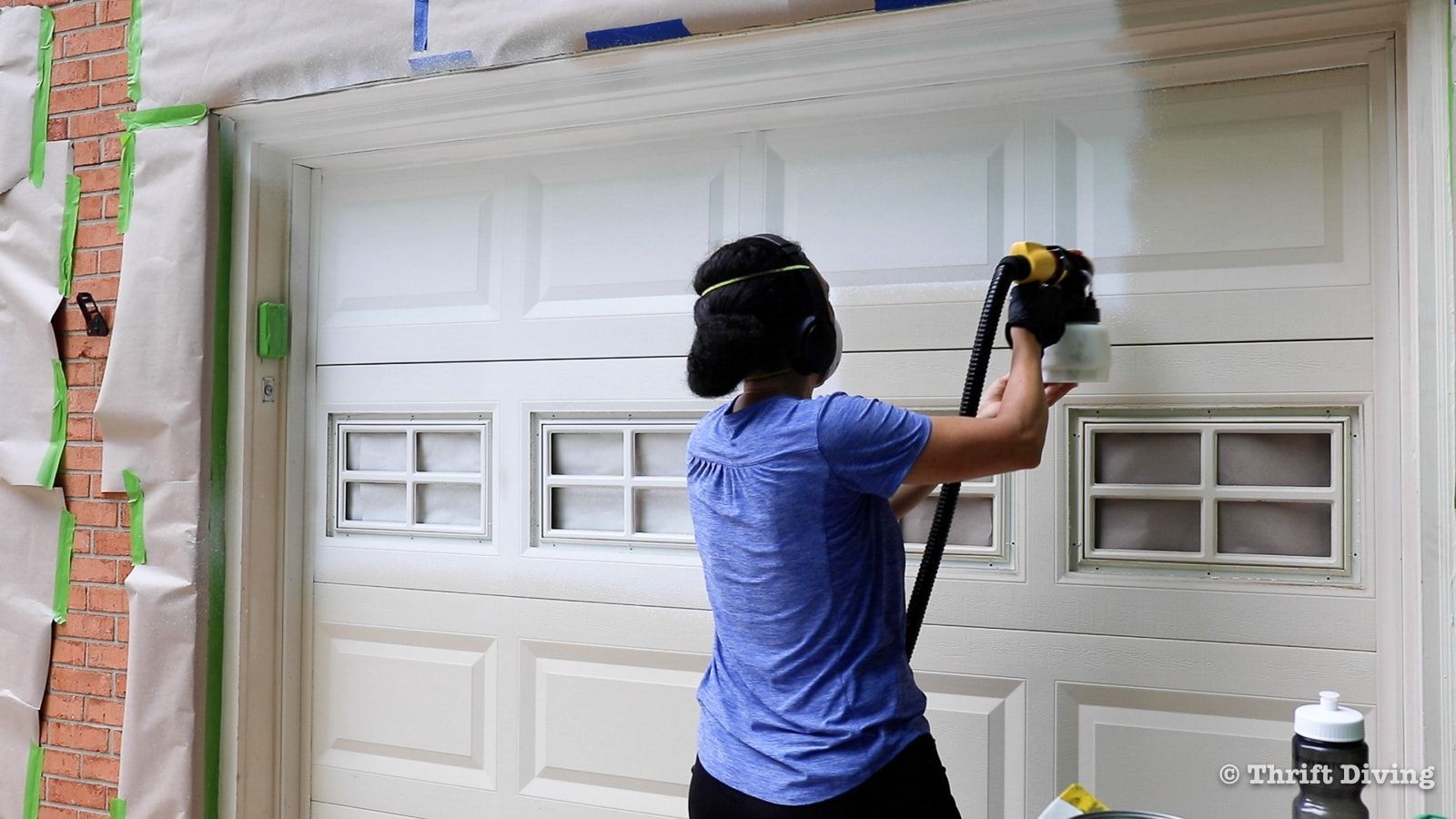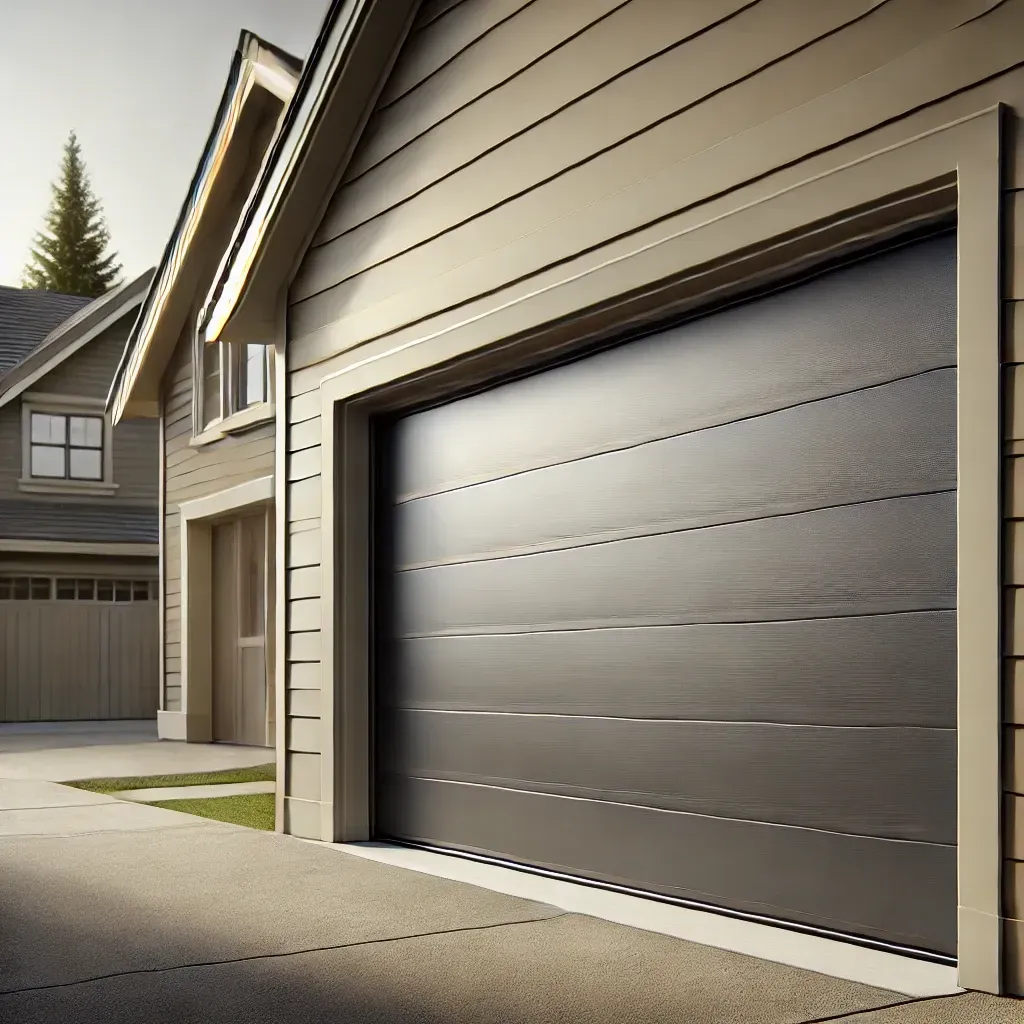Address: 11275 E Alameda Ave Unit 07 Apt 18, Aurora, CO 80012, United States
Why Is My Garage Door Uneven or Sagging on One Side? Causes & Fixes
A garage door that is uneven or sagging on one side is typically caused by issues with the springs, cables, tracks, or rollers. When these components wear out, break, or become misaligned, they disrupt the door’s balance, leading to improper movement and potential safety hazards.
At
Smart Garage Door, we understand how frustrating and inconvenient a crooked garage door can be. Left unaddressed, an unbalanced door can strain your garage door opener, accelerate component wear, and even create a security risk. In this guide, we’ll break down the common causes, signs of an unbalanced garage door, and step-by-step solutions to fix the issue.
Common Causes of an Uneven or Sagging Garage Door
1. Spring Tension Imbalance
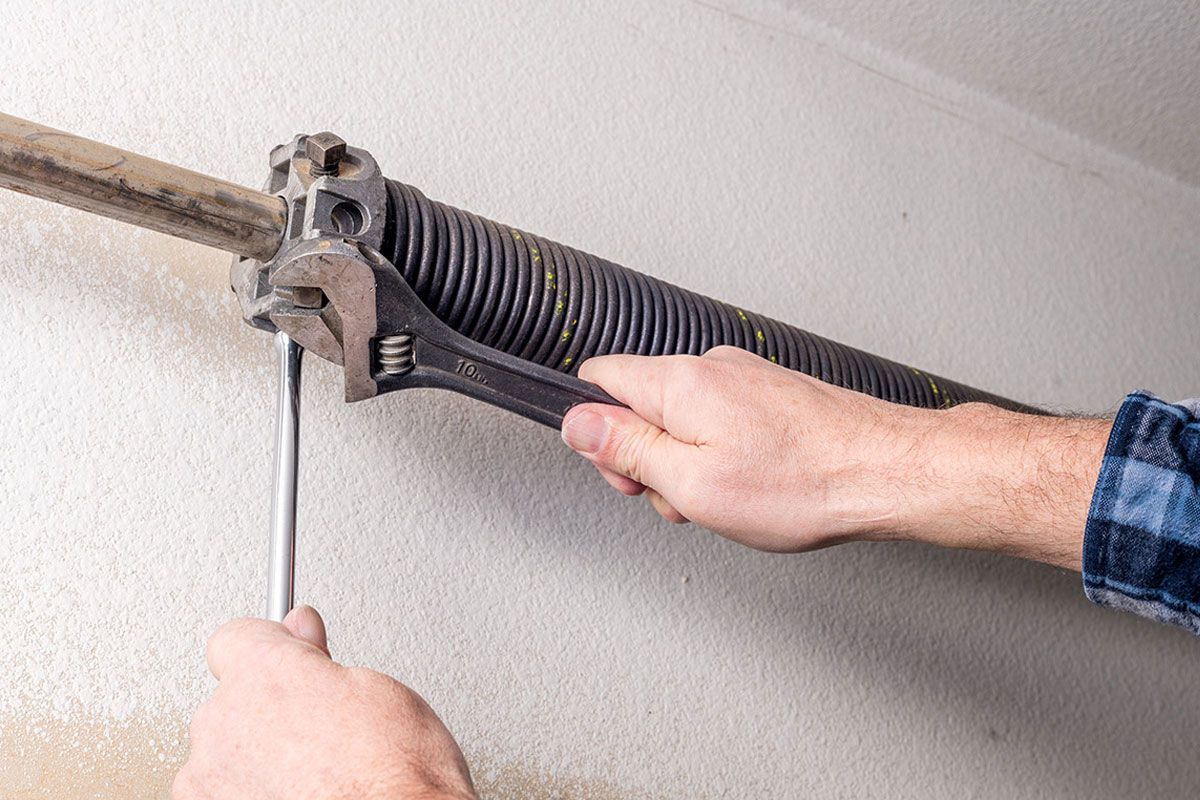
Garage door springs are responsible for counterbalancing the weight of the door. If one spring is weaker or broken, the door becomes lopsided.
- Torsion Springs: These run horizontally above the door and provide controlled lifting force.
- Extension Springs: Found along the sides, these stretch and contract to lift the door.
Signs of Spring Issues:
- One side of the door is higher than the other.
- The garage door struggles to open or closes too quickly.
- You hear a loud snapping sound (indicating a broken spring).
2. Damaged or Misaligned Tracks
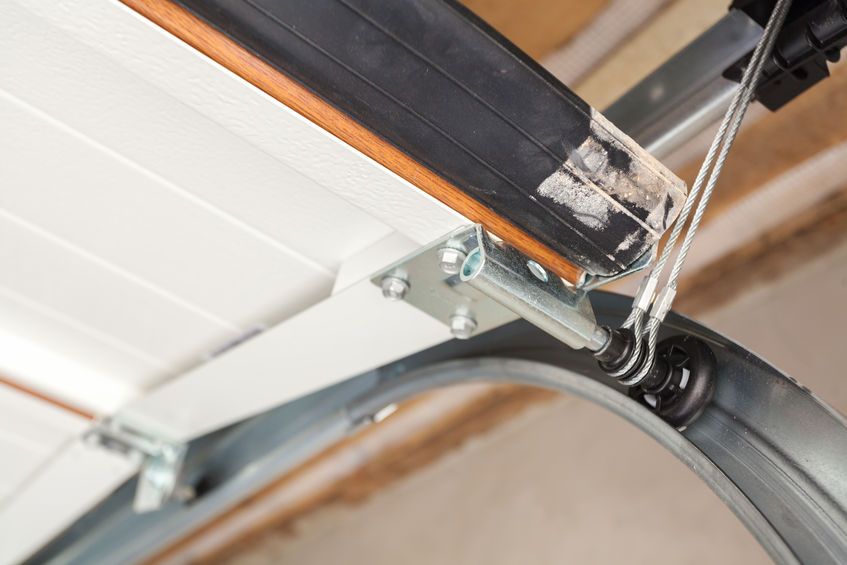
Garage door tracks guide the rollers, ensuring smooth operation. If they become bent, loose, or obstructed, the door can become uneven.
Common Causes:
- Accidental impact (e.g., bumping the track with a car or heavy object).
- Loose hardware causing tracks to shift.
- Rust, debris, or dirt accumulation inside the track.
How to Identify Track Misalignment:
- The garage door shakes or jerks when moving.
- Visible gaps between the rollers and tracks.
- The door gets stuck mid-operation.
3. Worn-Out or Broken Lift Cables
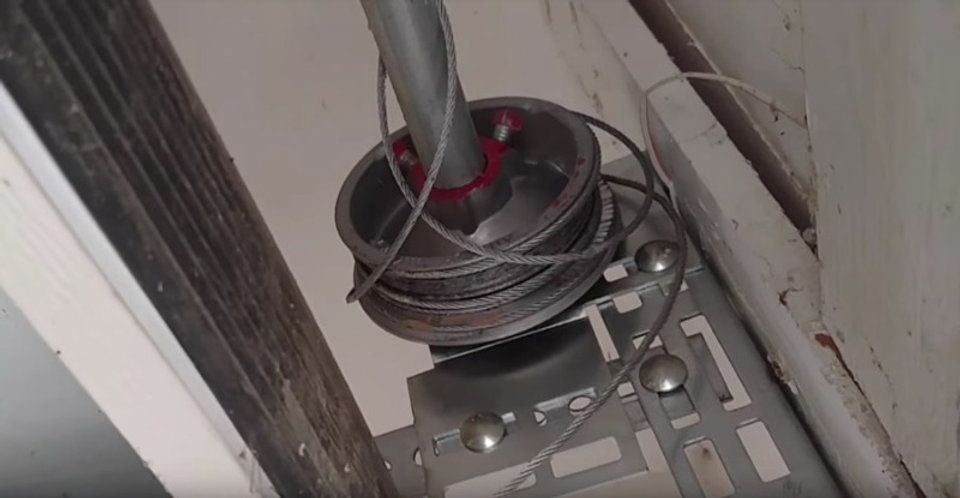
Garage door cables work with springs to lift and lower the door. A frayed, stretched, or snapped cable can cause one side of the door to sag.
Warning Signs:
- Visible fraying or thinning of the cable.
- One side of the garage door doesn’t lift properly.
- The door hangs unevenly when fully open.
4. Roller and Hinge Issues
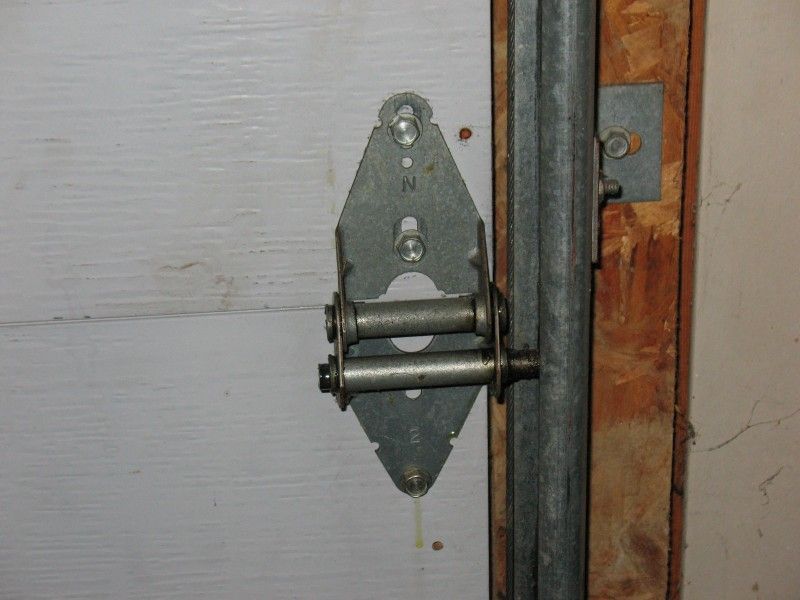
Garage door rollers guide the door along the track, while hinges keep door panels aligned. If rollers or hinges wear out, they can cause misalignment, making hinges repair essential for smooth operation.
Indications of Roller or Hinge Problems:
- Loud grinding or squeaking noises when opening/closing.
- The door sticks or moves unevenly.
- Rollers appear cracked or off-track.
5. Environmental & Structural Factors
Sometimes, the issue isn’t with the door itself but with the surroundings.
- Uneven Garage Floor: If the concrete slab has shifted or settled, the door may not sit evenly.
- Weather Damage: Wood garage doors can warp due to humidity, affecting balance.
- Poor Installation: If the door wasn’t installed correctly, it may have been off-balance from the start.
Signs Your Garage Door Is Unbalanced
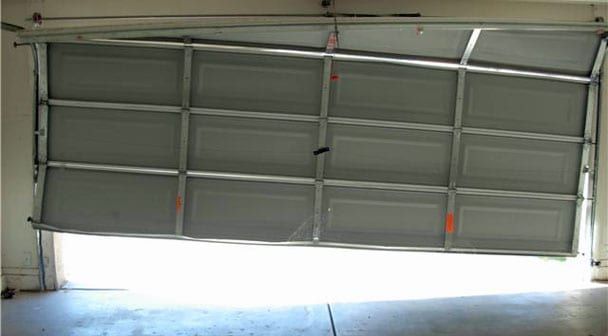
Knowing the warning signs can prevent costly damage down the line.
Visual Indicators:
- One side of the door is higher than the other.
- Gaps between the door and the ground when closed.
Operational Symptoms:
- The door hesitates, jerks, or makes scraping sounds.
- The garage door doesn’t stay in place when lifted halfway manually.
DIY Balance Test:
- Disconnect the garage door opener.
- Manually lift the door halfway and let go.
- Observe:
- Stays in place: The door is balanced.
- Falls quickly: Springs may be too weak.
- Rises upward: Springs may be too tight.
Step-by-Step Guide to Fixing an Uneven Garage Door
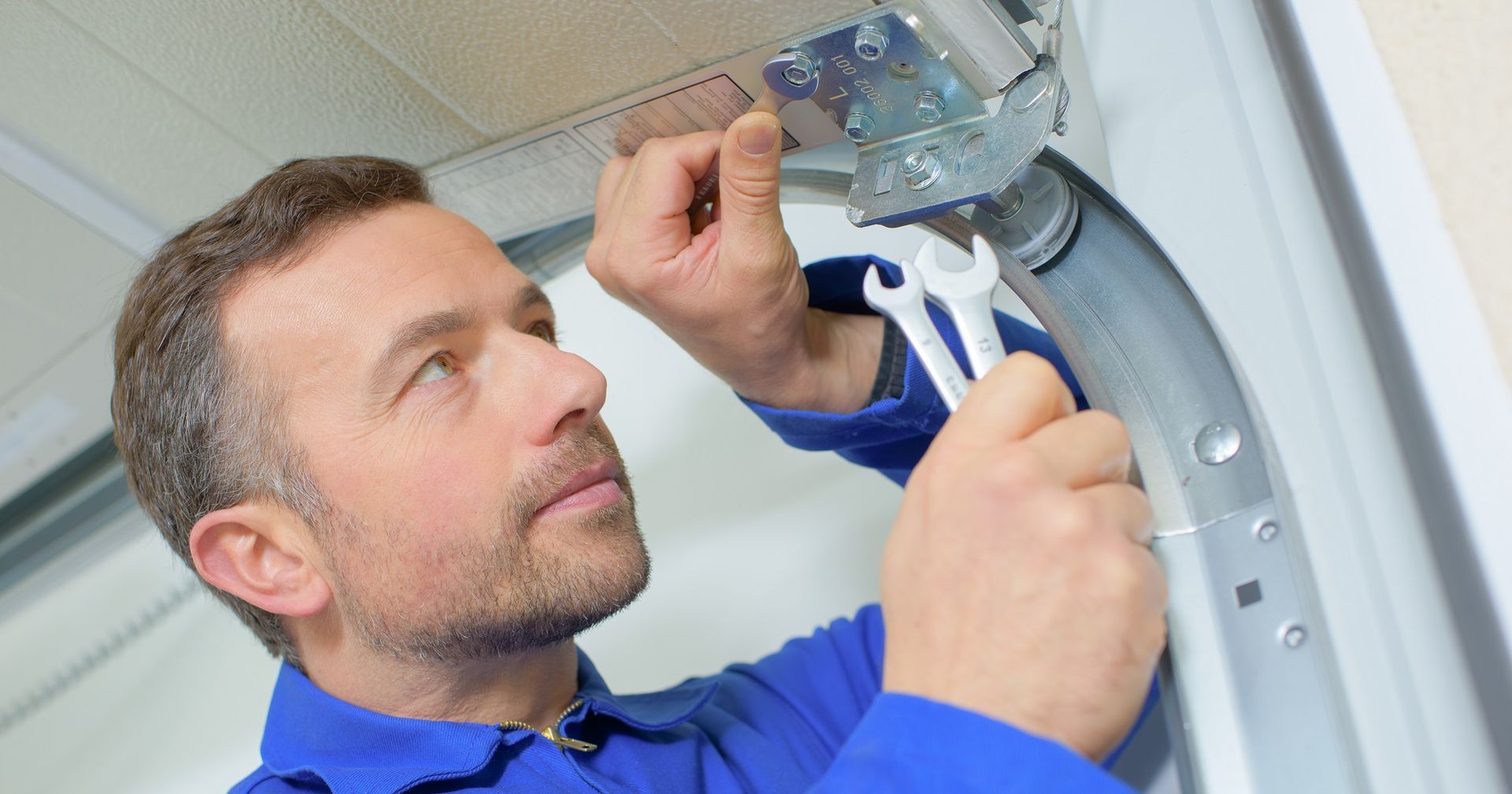
Safety First: When to Call a Professional
- Broken or high-tension springs (DIY repairs can be dangerous).
- Severely bent or damaged tracks.
- Snapped cables requiring full replacements.
DIY Fixes for an Unbalanced Garage Door
1. Adjusting Garage Door Springs
If your garage door is uneven due to spring tension issues,
Garage Door Spring Replacement may be necessary to restore balance.
- Use a winding bar to carefully adjust torsion spring tension.
- Adjust extension springs using the adjustment clip.
2. Aligning Garage Door Tracks
- Loosen the track mounting brackets.
- Gently tap the track back into place.
- Tighten the hardware securely.
3. Lubricating Hinges, Rollers, and Tracks
- Use a garage door-specific lubricant on moving parts.
- Avoid using WD-40, as it attracts dirt.
4. Replacing Worn-Out Cables & Rollers
- If the cables show signs of wear, replace them before they snap.
- Swap out damaged rollers with nylon rollers for smoother movement.
Preventative Maintenance Tips
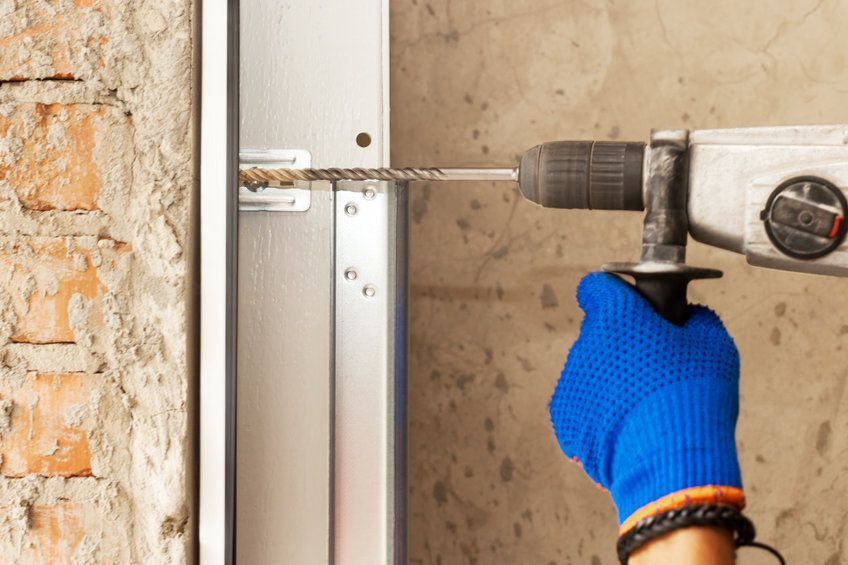
Regular maintenance prevents future issues and extends the life of your garage door.
- Inspect Components Every 3–6 Months: Check springs, cables, rollers, and tracks.
- Lubricate Moving Parts: Use lithium-based grease or silicone spray.
- Schedule Annual Tune-Ups: A professional inspection can catch problems early.
Related Issues & Solutions
Garage Door Sagging in the Middle
- Common in wooden garage doors due to warping.
- Reinforce the door with a strut bar or install a new panel.
How Weather Affects Garage Door Alignment
- Metal doors contract in cold weather, causing slight misalignment.
- Wooden doors swell in humidity, making them harder to close.
Conclusion
An uneven garage door isn’t just an inconvenience—it’s a safety risk that can lead to further damage if left untreated. From worn springs and snapped cables to misaligned tracks and roller issues, several factors can cause your garage door to sag on one side. By identifying the root cause and following the right repair steps, you can restore balance to your door and ensure smooth operation.
At Smart Garage Door, we specialize in professional garage door repairs and maintenance. If your garage door is unbalanced or showing signs of wear, don’t wait for the problem to worsen.
Contact us today for expert assistance and long-lasting solutions.
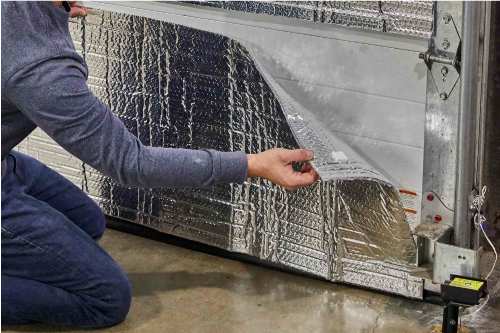
Contact Us:
Contact Us - Home
We will get back to you as soon as possible.
Please try again later.
| All Rights Reserved | Smart Garage Door Services


